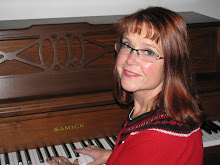(Notes from Sing, Play and Grow: A Family Guide to Musical Fun)
During Family Time Class your child will begin to learn how instruments are organized. Some instruments we tap and some we blow. Some have strings, some have reeds, some are made of brass. Putting things into categories is something preschoolers love to do. Learning about colors, shapes, and sizes brings some order to the chaos of early childhood. Discovering musical categories adds another dimension to recognizing similarities and differences.
The flute, violin, bassoon;
All night has the casement jessamine stirr'd
To the dances dancing in tune."Alfred Lord Tennyson
SEE HOW THEY GROW
Your Infant and Instrument Families
Not even the greatest musical prodigy can distinguish between strings and woodwinds in infancy, but sorting things into categories is something adults do all the time. (Think: winter clothes/summer clothes; junk food/healthy food; good boss/bad boss.) As with everything else, sorting starts in infancy. The first set of categories is broad and basic, probably something like "Am I comfortable or miserable?" which gets refined into "Am I sleepy or wakeful?" and "Am I hungry or full?" Soon your child is exploring the world by looking around and bringing anything within reach to his mouth. This leads to discoveries of contrasting shapes, textures, and sounds. So before your child can recite all of the brass instruments (don't forget the flugelhorn), he'll need to develop more basic concepts such as "warm/cold."
Your Toddler and Instrument Families
Now that your child is up and about, she is able to examine and analyze everything within her reach. As part of her play she's discovering how some things are the same and others different, and she is mentally developing categories--wet/dry, big/little, soft/hard. She may be thinking, "Not all stuffed animals look alike, but they have a lot in common, and they don't look at all like blocks." In the same way, she's registering that the sounds she hears when she bangs pot lids together are different from those she hears when she squeezes her favorite squeaky toy. Because children don't have the words to assign names to categories, it's hard for us as parents to see this development taking place, but under our very noses our children are developing concepts. This ability to translate some concrete thing to an abstract idea is powerful stuff. When our children start talking, we get a peek at how they're organizing their world. At first the word "doggy" may refer to all animals. Then "doggy" may mean "dogs and cats," and finally "doggy" may mean "all dogs except Pekingese." Your child still isn't naming brass instruments yet, but she knows that clicking rhythm sticks and tooting through a tube are two different ways to make music.
Your Preschool and Instrument Families
If you check in with a preschool teacher (or even pay attention to what you find yourself teaching your child during daily activities at home) you'll see that forming categories is at the heart of the preschool curriculum. At this age children are learning colors, shapes, and sizes; they're learning times of day and seasons of the year. Preschoolers are good at this kind of simple categorization--it's what they like to do. Identifying the sections of the orchestra is too complex, but your preschooler can happily distinguish between making music by blowing, making music by strumming, and making music by tapping. Understanding these basic divisions will help a child grasp more sophisticated distinctions when he's older.
What are your family's favorite instrument families? Leave a comment or tweet @Angelmusik





No comments:
Post a Comment